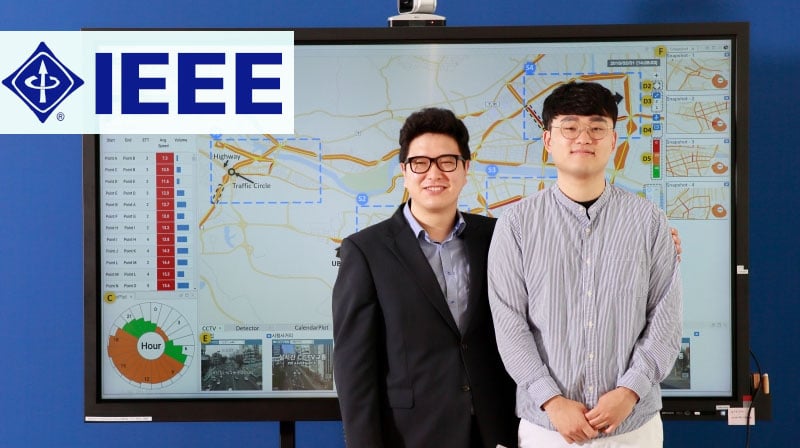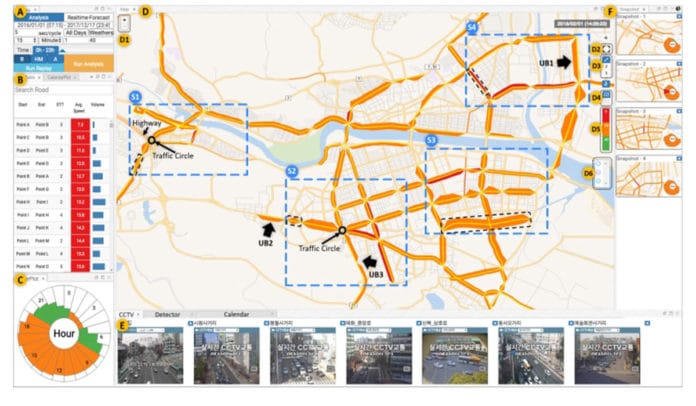UNIST scientists have recently developed an interactive visual analytics system that enables traffic congestion exploration, surveillance, and forecasting based on vehicle detector data. Their system can predict traffic conditions for the next 5 to 15 minutes at an error rate of fewer than four kilometers an hour.
This intelligent visual analytics system empowers traffic congestion exploration, observation, and determining dependent on vehicle detector information. Through domain expert collaboration, we have extricated task requirements, consolidated the Long-Short Term Memory (LSTM) model for congestion forecasting, and designed a weighting technique for distinguishing the reasons for congestion and congestion propagation directions.
The system then visualized the traffic situation for easier comprehension: Congestion levels and average driving speed, for instance, are described using colors and shapes.

Chunggi Lee in the Combined M.S/Ph.D. of Electrical and Computer Engineering at UNIST said, “The new system learned past average speed in certain traffic locations along with congested areas on nearby roads, and traffic conditions during rush hour. Using this system will allow navigation programs to notify the driver how current traffic conditions may change in the next 5 minutes.”
Professor Sungahn Ko from the School of Electrical and Computer Engineering at UNIST, said, “The new data visualization technology will be implemented in the Urban Traffic Information Center (UTIC) website so that anyone can easily understand the road traffic situation. This technology, which can utilize a large amount of traffic data, can also be used to find the optimal route during bad traffic situations, in conjunction with traffic broadcasting services or navigation programs.”
“In future work, we plan to perform more rigorous experiments by forecasting with other factors (e.g., weather, accidents) to develop more accurate forecasting models.”
The findings of this study had been achieved through cooperation with related experts, such as the National Police Agency, the Korea ROAD Traffic Authority (KoROAD), the Ulsan Traffic Broadcasting Network (TBN), and the Transportation and Construction Bureau of Ulsan Metropolitan City Hall.
The study is published in the journal IEEE Transactions on Visualization and Computer Graphics.
